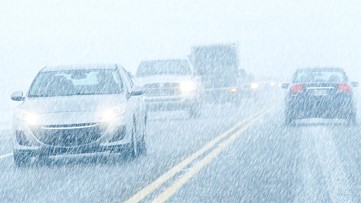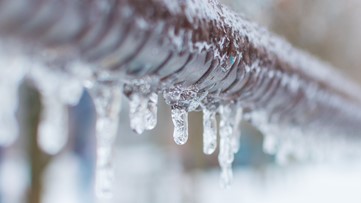Hurricane Milton rapidly intensified to a peak wind speed of 180 mph on Oct. 7, winds strong enough to make it a Category 5 hurricane. The storm lost some intensity as it began to grow and is now a Category 4, but the National Hurricane Center expects Milton’s strength to fluctuate as it approaches Florida's gulf coast.
Milton’s peak wind speeds were among the strongest ever for an Atlantic hurricane, which prompted some people on social media to say the storm could become a Category 6 if it reached wind speeds of 192 mph.
THE QUESTION
Do Category 6 hurricanes exist?
THE SOURCES
February 2024 paper by pair of climate scientists on a theoretical category 6
Brittany Van Voorhees, meteorologist at WCNC
THE ANSWER
No, Category 6 hurricanes do not exist.
WHAT WE FOUND
The scale the National Hurricane Center (NHC) uses to measure hurricane intensity goes up to Category 5 and does not include any ratings beyond that. While some scientists have proposed adding a Category 6, the NHC has not officially considered such a change.
The NHC rates hurricane intensity using the Saffir-Simpson Hurricane Wind Scale. This scale rates hurricanes based on their maximum sustained wind speed, meaning the hurricane is constantly producing winds at that speed as opposed to only reaching it in gusts. It does not take into account other potentially deadly hurricane hazards such as storm surge, rainfall flooding or tornadoes, the NHC says.
On this scale, a tropical storm becomes a Category 1 hurricane when it reaches maximum sustained wind speeds of at least 74 mph. Major hurricanes are Category 3 or higher, and have wind speeds of at least 111 mph.
The scale’s highest rating is Category 5, which a storm is classified as if it has maximum sustained wind speeds of at least 157 mph.
The purpose of this scale is to measure the potential damage the hurricane’s winds could cause. At Category 1, the hurricane will have very dangerous winds that produce some damage. At Category 2, extremely dangerous winds will cause extensive damage. A Category 3 hurricane causes “devastating damage.”
Both Category 4 and 5 hurricanes produce winds that cause “catastrophic damage,” according to the scale. A Category 5 hurricane in particular will leave most of the area it hits “uninhabitable for weeks or months.”
"With climate change supercharging storms, the storms that form have become stronger in certain years: 3s becoming 4s, 4s becoming 5s, etc," Brittany Van Voorhees, a meteorologist at VERIFY partner station WCNC, said. "But as of now, I think most meteorologists would agree that adding an extra threshold doesn’t really help people and describe the impact they’ll see. We should already be taking Category 5 storms seriously as this describes 'catastrophic damage'… and many people already don’t take that language seriously. Additionally, it would be another layer for the public to digest."
In February 2024, a pair of scientists specializing in climate and extreme weather modeling did write a paper theorizing what a hypothetical Category 6 might look like and if any hurricanes in the past or the future might qualify for such a rating. The scientists proposed a hypothetical Category 6 hurricane would have sustained wind speeds of more than 192 mph.
But there have been no changes to the actual Saffir-Simpson scale, and the NHC has not announced that it’s even considering making any changes to the scale.
Strong winds are not the only dangers a hurricane can pose. Even Category 1 hurricanes and tropical storms can produce life-threatening storm surge, catastrophic flooding and tornadoes.












